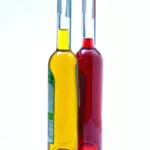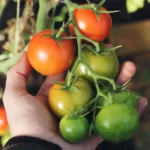Hey there, soil reuse experts! It’s time to get down and dirty with a question that’s on the minds of many gardeners: can you reuse soil from last year?
It’s an important question; after all, if we want our gardens to thrive, it starts with healthy soil. Reusing old soil might save us some money—and who doesn’t love saving a few bucks here and there? But is it worth risking your plants’ health for a little extra cash in your pocket?
Let’s dig into this topic and see what kind of answers we can come up with! With just a bit of knowledge about soil composition and how different plants interact with their environment, you’ll be well on your way to becoming a certified Soil Reuse Expert. And don’t worry — I’m going to make sure this journey is as fun (and funny) as possible. So let’s go!
Soil Structure And Composition
Soil is the foundation of growth and life, with its complex structure and composition providing a rich environment for plants. As an expert in soil reuse, I can tell you it’s essential to understand how this valuable resource works before attempting to recycle it.
To start off, there are many types of soil; depending on the location each has different characteristics, such as fertility or texture. The organic material that makes up the top layer of most soils includes minerals, small particles of rocks and decaying plant matter known as humus – vital elements in maintaining healthy levels of nutrients necessary for successful growing seasons. Additionally, when reusing soil, one must consider adding amendments to improve various qualities like water retention or drainage capabilities.
Having knowledge about the components making up your soil allows you to identify if any improvements need to be implemented prior to replanting again – thus creating optimum conditions for a bountiful harvest year after year!
Benefits Of Reusing Soil
Reusing soil comes with many benefits, which makes it a great option for gardeners and farmers alike. Here are some of the pros to look forward to when recycling old soil:
- Improved Soil Fertility: Recycling soil can help bring back lost fertility due to overuse or erosion. Nutrients such as phosphorus, nitrogen, and potassium that have been depleted from heavy use or wind/water erosion can easily be replenished by reusing the same soils.
- Cost Savings: Reusing old soil is much more cost effective than purchasing new topsoil for each season or crop cycle. This means you’ll save money in the long run without having to buy additional supplies every year!
- Reduced Waste Streams: By reusing already existing soils rather than buying new ones, less waste streams will be created as fewer materials need to be disposed of. This helps keep our environment clean and green!
- Enhanced Plant Growth: Because recycled soil contains essential nutrients needed for plant health, plants grown in reused soil tend to thrive better than those planted in newly purchased dirt.
- Conservation of Resources: Reusing old soils conserves resources like water and energy by not needing to create new grounds each planting season—a huge plus on your environmental impact report card!
Overall, there are plenty of advantages associated with soil reuse that make it an excellent choice for anyone looking for sustainable gardening practices. And best of all? You don’t even need special equipment or knowledge – just dig up last year’s used ground and voila – you’re ready to start growing again! With so many different ways to benefit from this practice, it’s no wonder why people are turning toward this eco-friendly alternative. Now let’s take a look at the potential risks associated with reusing soil…
Risks Of Reusing Soil
Reusing soil from last year can be a risky endeavor. Not only could it contain diseases, pests or pathogens that are harmful to plants, but the quality of the soil itself may have degraded over time. Contamination is also an issue – if you used chemical treatments in your garden last season, they could still remain in the soil and cause damage when reused.
Therefore, great care should be taken before deciding to reuse old soil. The first step should be to test the pH levels of the soil with a simple kit available at most gardening stores. This will help determine whether or not it’s suitable for growing plants again. It’s also wise to check if there are any visible signs of disease or pest infestation on plants grown in this soil previously. If so, dispose of it responsibly instead of trying to use it again.
The best way to ensure safe re-use is by composting the existing material first and then mixing it back into fresh potting mix. This helps reduce potential risks while increasing nutrient availability for more robust plant growth in the future. So let’s look at how we can prepare used soil for reuse without compromising its safety or quality!
How To Prepare Used Soil For Reuse
Preparing used soil for reuse can be a bit like gardening with alchemy. A little of this and that, mixed in carefully and you could create the perfect environment for your plants to thrive! Soil preparation is an important step before reusing it in your garden or yard. Here are some steps to get started:
First, sift through the soil to remove any large clumps or debris from last year’s growth. This will allow all the beneficial organisms to have plenty of space to move around and help aerate the soil. Sifting also helps ensure no weeds take up residence in your new garden plot.
Next, amend the soil with compost if needed. Compost provides nutrients that may not already exist in the soil, such as nitrogen and phosphorus, which will help give your plants a boost of energy throughout their growing season. Also consider adding other amendments such as vermiculite or perlite depending on what type of plant life you plan on growing.
Finally, test the pH levels of your soil after amending it to make sure you are providing optimal conditions for whatever crop you intend on planting. Knowing what kind of fertility level exists within your reused soil will save time later when trying to figure out why certain plants won’t grow properly or produce fruit/vegetables at their peak potential. With these tips in mind, you should now have everything necessary for successful reuse of last year’s soil! Ready for another round? Let’s tackle composting next – our secret ingredient for amazing plant health!
Composting For Soil Amendment
Now that we’ve covered how to prepare used soil for reuse, let’s take a look at another way to enhance your garden or field with the same nutrients and beneficial bacteria you’d find in fresh soil. Composting is one of the best ways to add important elements like nitrogen, phosphorus, potassium and other trace minerals while also introducing beneficial microbes into the soil.
| Advantages | Disadvantages |
|---|---|
| Improves Soil Fertility | Time Consuming |
| Adds Nutrients & Beneficial Bacteria | Potential Odor Issues |
| Easy To Implement | High Maintenance Requirements |
The advantages of composting are numerous. It can improve soil fertility by adding essential nutrients and beneficial bacteria which helps promote healthy plant growth. Composting is easy to implement, requiring only basic supplies such as compost bin, kitchen scraps, yard waste, water and an occasional aerating tool. However, it does require frequent monitoring and maintenance; otherwise unpleasant odors may be produced affecting nearby vegetation or neighbors.
With that being said though, composting remains a great option for those looking to increase their yield without having to purchase new soil every year. While there are many alternatives to using old soil – none come close to matching the benefits offered by regular composting!
Alternatives To Using Old Soil
Reusing soil from last year isn’t always the best option. Fortunately, there are other alternatives! Soil-free gardening is a great way to get your garden started without reusing old soil. Container gardening allows you to control which soils and nutrients are used in the container, while also allowing for easy transportation of plants when needed. Vermicomposting is an organic method of composting using worms that can be done indoors or outdoors. This process helps break down kitchen scraps and yard waste into usable compost material.
Soil-less plants like hydroponics allow you to grow plants with just water and nutrients, eliminating the need for traditional soil altogether. Hydroponic setups come in all shapes and sizes so they’re perfect for any space. Plus, this type of setup requires minimal maintenance compared to more traditional methods of gardening.
No matter what alternative you decide on, proper disposal of used soil should be taken seriously as it contains contaminants that could potentially harm nearby ecosystems if not properly managed. With these options available, we can make sure our gardens remain healthy and sustainable well into the future!
Proper Disposal Of Used Soil
When it comes to properly disposing of soil, there are a few key points that you should keep in mind:
- Dispose of used soil responsibly – make sure to use the right equipment and disposal methods;
- Safeguard your environment by using safe disposal processes when disposing of soil;
- Consider alternatives such as composting or reusing old soil if possible.
If you have decided to dispose of your used soil, here are some tips on how to do so safely:
- Check with your local waste management authority for proper guidelines on disposing of soil;
- Ensure all essential safety protocols are followed when transporting and handling the disposed material;
- Make sure that any hazardous substances present in the disposed material is adequately contained before being sent off for disposal.
Disposing of soil correctly can help protect our environment from chemical contamination and other pollutants which could result from improper disposal practices. There are various ways to go about this, including sending materials to appropriate recycling centers, donating them to agricultural programs or charities, or repurposing items into new products like potting mix or topsoil. Taking these steps will ensure that we can continue to enjoy healthy soils for years to come!
Conclusion
In conclusion, it is possible to reuse soil from last year in your garden. It can help you save time and money while providing a safe home for plants and vegetables. However, there are risks associated with reusing old soil that must be taken into account before doing so. Composting your used soil and adding amendments like sand or vermiculite can help improve the structure of the soil, as well as increase its fertility. Alternatives such as using store-bought potting mix, topsoil, or compost should also be considered if you feel uncomfortable reusing existing soil.
For example, I recently worked with a client who was considering reusing their old garden soil from last year’s harvest. We discussed all of the potential benefits and drawbacks involved in this process, including how to properly prepare the used soil for reuse. After carefully weighing the pros and cons, my client ultimately decided to purchase fresh potting mix instead – something which allowed them to avoid any unnecessary risks associated with reused soil while still achieving their desired outcome of a healthy vegetable garden!
Ultimately, deciding whether or not to reuse old soil will depend on each gardener’s individual needs and preferences. With that being said, however, it is important to keep in mind the potential health hazards posed by reused soil and take appropriate measures when preparing it for use in order to ensure optimal growth conditions for plants and vegetables alike!




